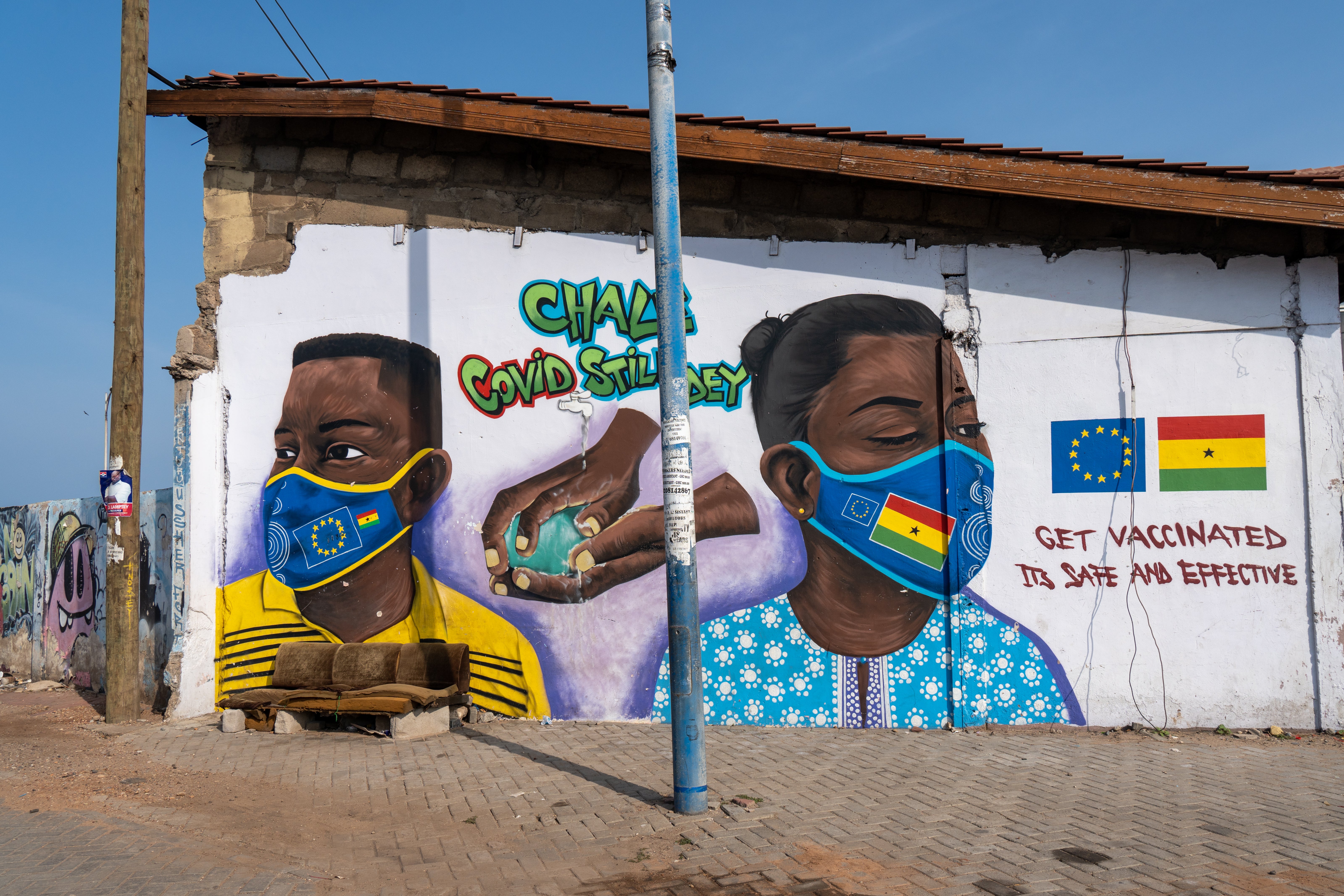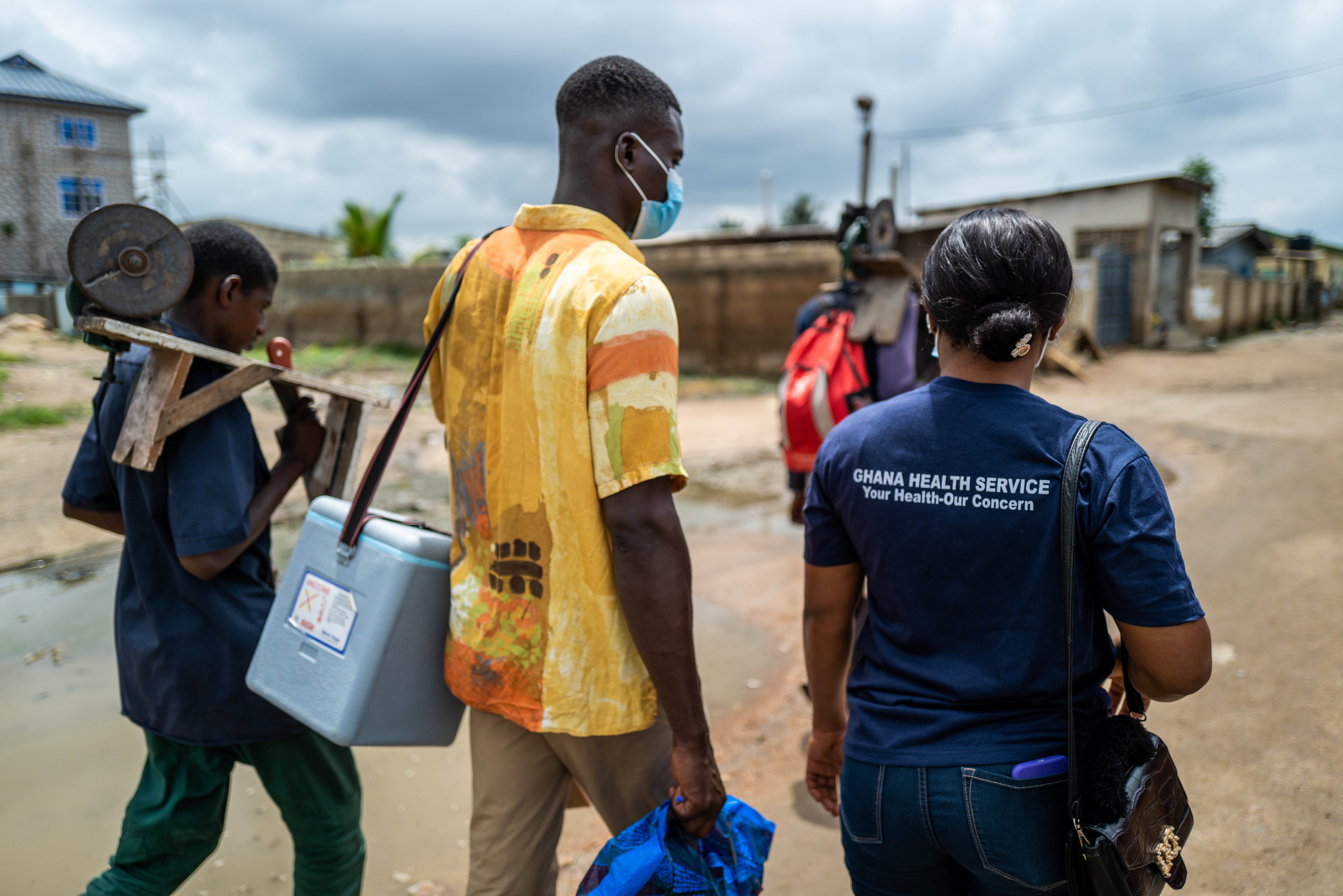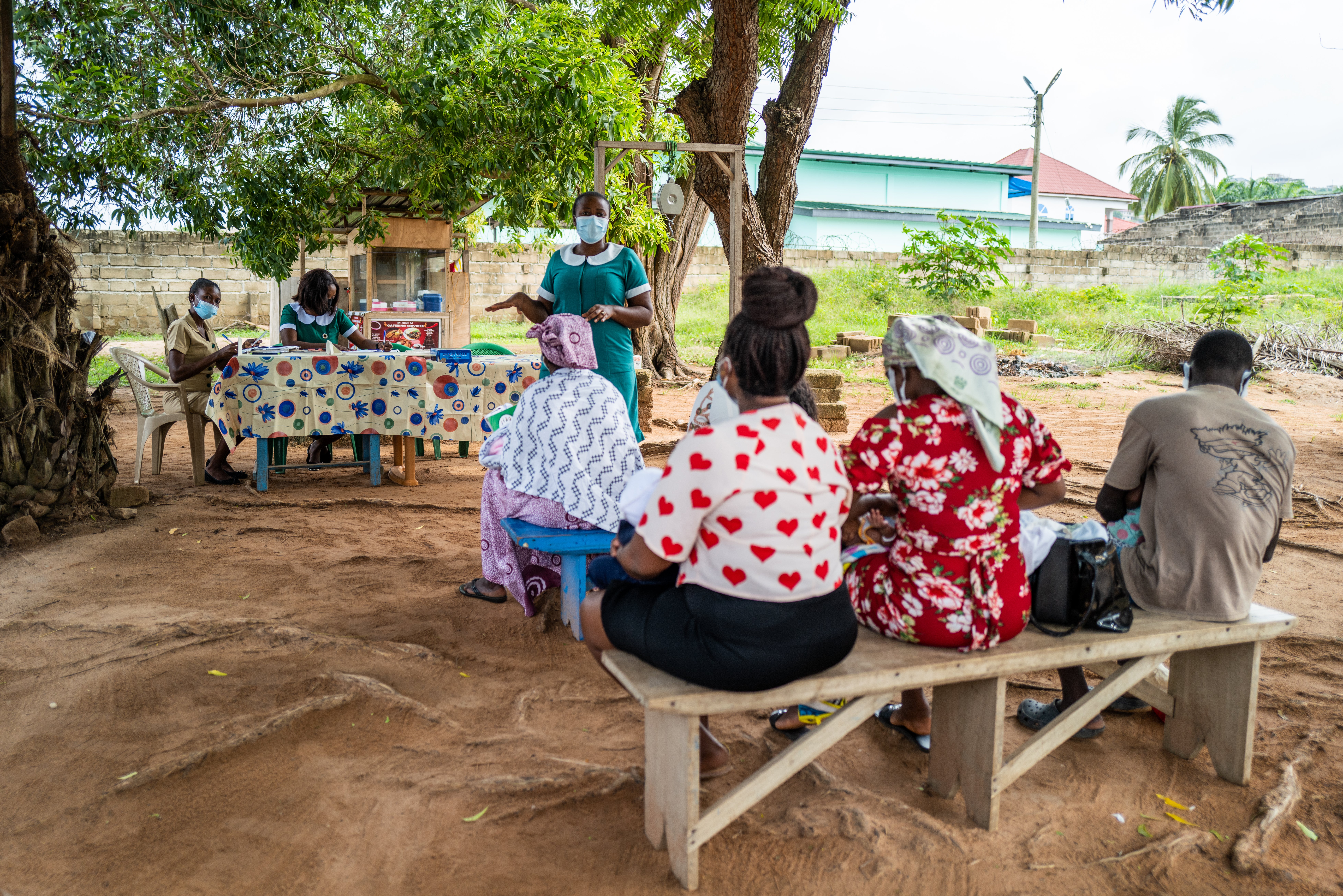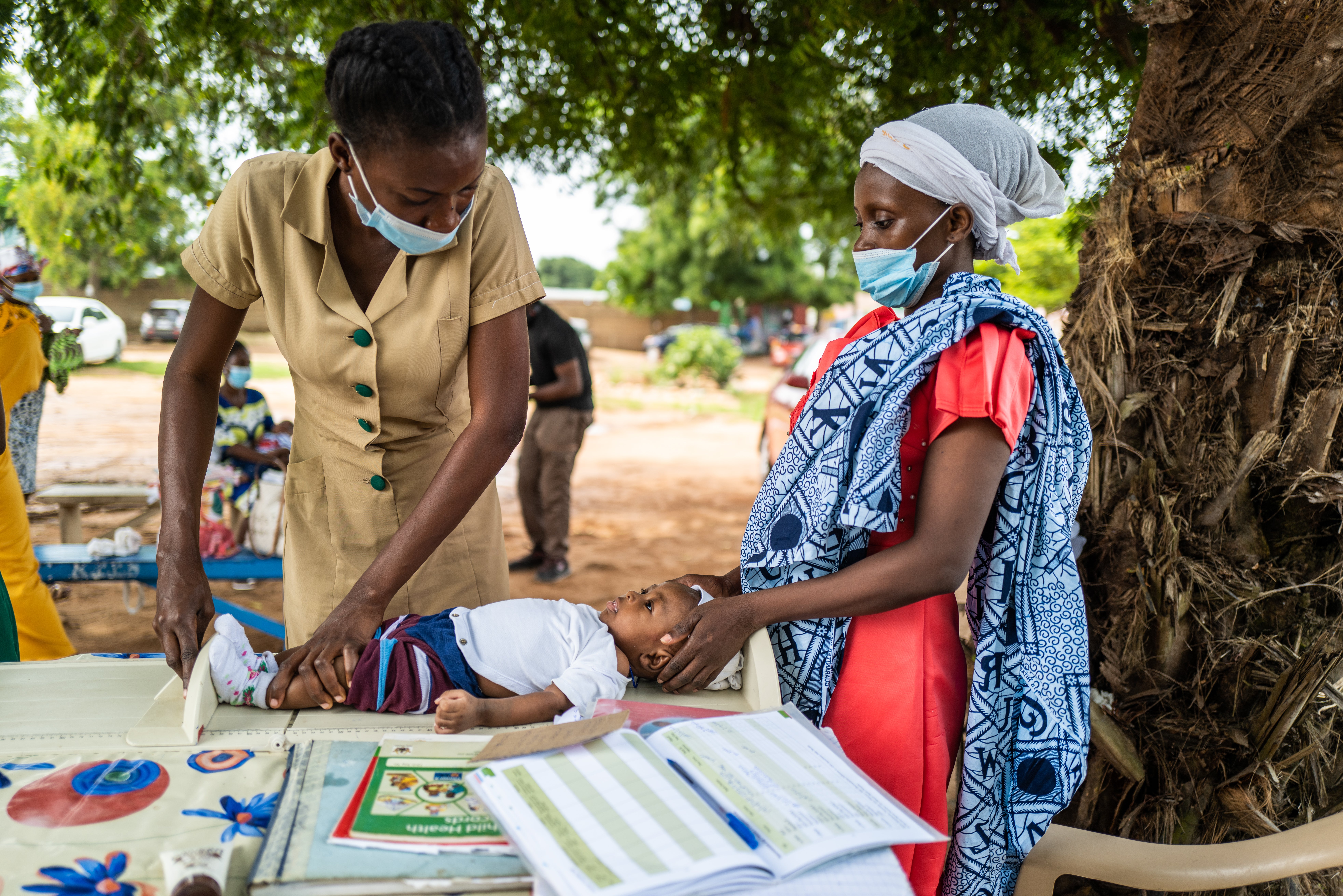COVID-19 RESPONSE AND THE MAINTENANCE OF ESSENTIAL HEALTH SERVICES IN GHANA
CONTENTS

KEY INSIGHTS
Ghana implemented COVID-19 mitigation strategies in the early months of the COVID-19 pandemic that were cross-cutting and comprehensive. They included case identification via contact tracing, public health and social measures such as movement restrictions, boosting the capacity of the health system to provide care for the sick and maintain the delivery of key essential health services, and policy interventions aimed at minimizing the pandemic’s effect on the country’s social and economic life.
This research was led by partners at the University of Ghana School of Public Health in collaboration with Makerere University School of Public Health and was supported and funded by the Bill & Melinda Gates Foundation and by the Exemplars in Global Health program at Gates Ventures.
Drivers of successful pandemic response
The World Health Organization and Global Health Security Agenda have developed useful frameworks for assessing epidemic and pandemic preparedness and response, which we have adapted for this research. Through our research, we aim to derive lessons learned about the drivers of a successful response and have developed a conceptual framework that categorizes the drivers into two groups: context and system factors and interventions, and also includes outcomes. The following pages on Ghana’s response to COVID-19 and the maintenance of essential health services are organized according to this framework.
National, governmental, and population-level measures: surveillance
Limiting cases and deaths via centralized decision-making
Health officials in Ghana acted quickly to stop the spread of COVID-19 using tools and systems they already had. For example, the country’s preexisting District Health Information Management System (DHIMS) made it possible to share crucial data quickly with officials, health workers, and the public. The Surveillance Outbreak and Response Management and Analysis System (SORMAS), developed in Nigeria and adapted for the Ghanaian context, enabled officials to track COVID-19 cases in real time and adjust mitigation strategies accordingly.
The data helped inform authorities’ decisions to implement public health and social measures such as border and school closures and temporary lockdowns. It also enabled easier distribution of key resources including personal protective equipment, hand sanitizer, and face masks.

National, governmental, and population-level measures: testing for diagnosis and detection
Implementing the “3T” strategy: test, trace, and treat

After Ghana recorded its first case of COVID-19 on March 12, 2020, officials implemented a system for targeted contact tracing to find infected people and stop the community spread of the novel coronavirus. Officials referred to this approach as the “3T” strategy—test, trace, and treat—since health workers referred everyone who tested positive for COVID-19 to a health facility for isolation and treatment.
As case counts increased, straining testing and laboratory capacity, the Ghana Health Service introduced pooled testing.
This strategy enabled health authorities to test large numbers of samples in a short time even when laboratory capacity and key supplies such as equipment and reagents were limited.
National, governmental, and population-level measures: risk communication
Communicating with the public via mass and social media
The Ghanaian health system’s experience with previous outbreaks of infectious disease, such as Ebola virus disease and cholera, meant that it already had key tools for public health risk communication that could be adapted for COVID-19.
In March 2020, the Ghana Health Service, National Commission for Civic Education, and Ministry of Information aligned to provide high-quality, coordinated messaging on the COVID-19 pandemic including case counts, preventive measures, policy announcements, and other key information.
From the beginning of the COVID-19 pandemic, the Ghana Health Service used mass media, including social media, to communicate with the public about preventive measures and public health protocols. Regular presidential addresses, ministerial press briefings, and government websites reinforced this official messaging, which was coordinated by a COVID-19 task force.

Health system–level response measures: service delivery adaptation
Mitigating obstacles to the delivery of essential health services

To continue delivering key essential and routine health services—while implementing public health and social measures to control the spread of COVID-19—Ghana’s health facilities stayed open from March 2020 on, while screening all patients for COVID-19. Service delivery adaptations aimed to strengthen the capacity of health workers and reduce transmission of COVID-19 in health facilities. Adaptations included the use of drones to deliver medical supplies and test samples (minimizing contact between health workers and others), health facility use of appointment systems that enabled the efficient deployment of frontline health workers (by rescheduling elective surgeries and assigning less severely ill patients to days of the week where health workers were less busy), and community health workers delivering routine essential health services via home visits.
COVID-19 RESPONSE AND THE MAINTENANCE OF ESSENTIAL HEALTH SERVICES IN GHANA

Ask an Expert
Our team and partners are available to answer questions that clarify our research, insights, methodology, and conclusions.
